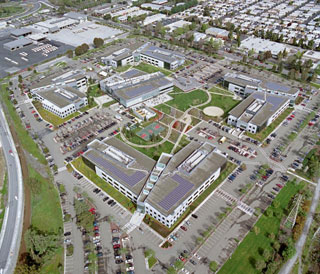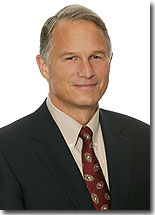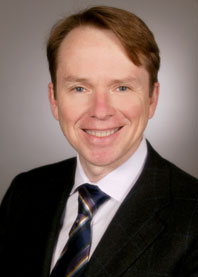
Microsoft opened the Silicon Valley Campus (SVC) in Mountain View, Calif., in October 1999. Today, SVC is the largest U.S. site outside of Redmond, Wash., and is home to more than 1,600 employees.
MOUNTAIN VIEW, Calif. — Nov. 23, 2009 — What is true in real estate also rings true in the IT industry: Location matters. For the past four decades, high-tech’s heart has beaten in California’s Silicon Valley. There, an abundance of sunshine, top-tier universities, and the availability of venture capital has nurtured an oversized share of the industry’s top companies and hottest start-ups.
Although the valley lies some 700 miles south of Microsoft’s Redmond, Wash. headquarters, Microsoft has had a presence there since the company’s early days. In addition to a sales force, it opened several small development offices scattered throughout the San Francisco Bay area. It wasn’t until 10 years ago, however, that Microsoft could call a single address in Silicon Valley home.
On Oct. 4, 1999, Microsoft opened the Silicon Valley Campus (SVC) in Mountain View, Calif. It has grown significantly since then. Today, SVC is the largest and most multidisciplinary U.S. site outside Redmond, home to more than 1,300 employees. In the past few years, Microsoft has acquired start-ups such as Tellme and Danger with their own facilities nearby. This growth has made the SVC designation obsolete. Today, employees in the area think of themselves as Microsoft Silicon Valley (MSV)—the marriage of two of the seminal brands in technology. Adding to the presence is a new sales office in the center of downtown San Francisco. All told, more than 2,000 employees work in the San Francisco Bay Area, and the number throughout California is approaching 3,000.

“Human resources are Microsoft’s key asset, and Silicon Valley has always been a hub for IQ and IP. It’s an important place to us, and it always has been,” says Dan’l Lewin, corporate vice president for Strategic and Emerging Business Development.
SVC’s creation—smack dab in the hotbed of innovation—helped spur Microsoft’s more concentrated involvement in the center of this vital community, says Dan’l Lewin, corporate vice president for Strategic and Emerging Business Development and SVC leader. “The campus is a physical manifestation of something that started 20 years ago with the first development offices,” he says. “Human resources are Microsoft’s key asset, and Silicon Valley has always been a hub for IQ and IP. It’s an important place to us, and it always has been.”
Cherie Gardiner, director of human resources, says that the valley’s wealth of tech talent is why SVC has developed a singular blend of creative, technical, and business resources. Most of the new hires have come from acquisitions, a testament to Silicon Valley’s importance in the IT world. “Investment money for the technology industry generally flows from Silicon Valley,” Gardiner says. “Our employees are characterized by their passion for the industry, their commitment to make a difference, and the inspiration they derive from the entrepreneurial and competitive spirit of the valley.”
Lewin and his team drive Microsoft’s outreach to the venture community and support for local and global start-ups. In a sense, reaching out to the Silicon Valley community has been an objective since the campus’ inception, says Doug Free, public relations director for SVC. The office was designed to be a hub for company events that engaged technology and community leaders. Today, the campus holds some 300 events a year, half of which are hosted by external groups and companies. “We’ve gone the extra mile to open up our campus and bring the community here,” he says.
That was one of the biggest factors in Silicon Valley’s shift in perception toward Microsoft, Free says. “Five years ago, it would not be uncommon for me to be sitting at an event and, when a Microsoft speaker would be announced, people would literally boo,” he recalls. “Today, we’re expected at the major events, and we’re welcome at the major events.”
Robyn Hines, senior director of California state government affairs for the company, agreed that Microsoft’s focus on becoming a partner helped change attitudes. Hines started working for Microsoft just after the campus opened. That same week, the judge presiding over the antitrust case against Microsoft released his findings of fact, which labeled the company a monopoly. “There were lots of questions about Microsoft’s role in the industry at the time,” Hines says. Microsoft’s community outreach helped stem animosity, as did the industry’s changing landscape. “Nowadays, there’s much more interest in the other dominant players in the industry,” Hines says.
The campus also gave Northern California-based Microsoft employees a central point of organization, says John Matheny, general manager of Premium Mobile Experiences. Matheny joined Microsoft in 1997 when it acquired Web TV Networks, where he worked. Many Silicon Valley employees had joined through acquisitions, and those groups rarely interacted with one another, he said. With the new campus, employees slowly started to integrate into a Microsoft community.

John Matheny, general manager of Premium Mobile Experiences, says the opening of the Silicon Valley Campus helped Microsoft employees in Northern California integrate into a Microsoft community.
Living so close to the competition also creates a strong sense of community. “Literally, you could throw a baseball to Google’s campus,” Lewin says. “You don’t have to go far to see our competitors. I think a very large percentage of employees work really hard at representing the company in that context. People are really proud of the company and the work they do.”
SVC has become a center for a number of technical disciplines, including digital entertainment and Microsoft Research (MSR). MSR founded its Silicon Valley lab in 2001, and it did so for the same reason it starts a lab anywhere—the availability of excellent talent, says Roy Levin, the lab’s managing director. The presence of some of the country’s top universities, such as Stanford, University of California at Berkeley, and University of California at Santa Cruz, makes Silicon Valley a natural location for a lab, he says.
The proximity enables regular collaboration with graduate students, professors, and other academics, Levin says. One recent project with UC Berkeley produced a device dubbed the BEE3 (Berkeley Emulation Engine version 3). The BEE3 enables researchers to perform large-scale tests of software running on novel computer architectures, which is important in the world of multicore computing. “There are lots of ways to organize the modern computer, but we don’t necessarily know what will be most effective,” Levin says. With the BEE3, researchers can try things out cheaply and efficiently, and the hardware is available to research organizations around the world, he said.
MSR’s Silicon Valley lab has also contributed a number of technologies to Microsoft products. Working right in Google’s backyard, the lab has helped the Bing team on a number of fronts. For example, the team participated extensively in the design of the core search engine and subsequently produced several algorithms that improved relevance rankings. The lab also created “Active Answers,” a feature that lets users interact with results to instantly get information such as flight statuses or stock quotes. Bing and other teams have taken advantage of the lab’s Dryad project, which is a system that harnesses computer clusters to analyze very large data sets. Using Dryad, the Bing team analyzes its massive amounts of data to improve the quality of search results, Levin said.
As SVC celebrates its 10-year anniversary, its location in the heart of the tech industry guarantees it will play an important role in Microsoft’s future, agreed employees who work there.
“I think the valley is going to become more important to Microsoft because the rate of innovation is accelerating,” Free said. “With all the talent and great start-ups, much of the innovation happening around the Internet, social media and consumer technology is happening in Silicon Valley. Because we’re a partner company, we need to be down here partnering with the next generation of companies.”




